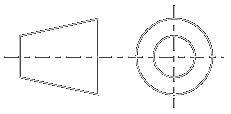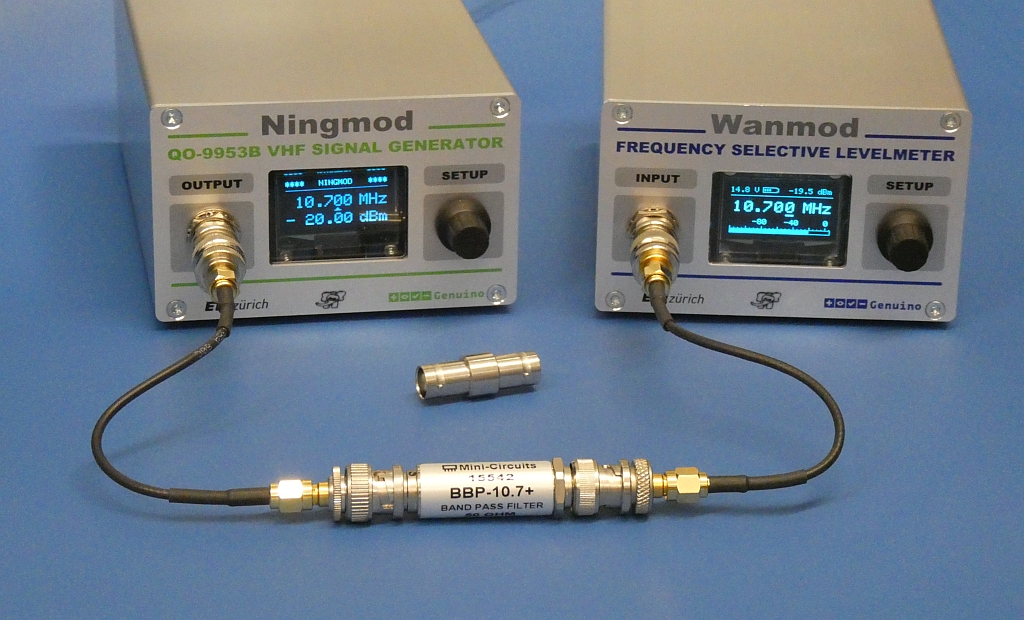
Categories
Statistics
Since 08.08.2014
Counts only, if "DNT = disabled".
Your IP is 18.119.126.80
ec2-18-119-126-80.us-east-2.
Counts only, if "DNT = disabled".
Your IP is 18.119.126.80
ec2-18-119-126-80.us-east-2.
Info
เราจะทำแบบวิศวกรผู้ยิ่งใหญ่

27. April 2024
Your valuable opinion :
PyLab-Amplitude-Response-107.php 10930 Bytes 17-08-2022 17:50:29
Python Lab Experiments - 10.7 MHz Bandpass
Arduino Lab Automation Example / Exercise

✈ Minimum Equipment List (MEL)
| DEVICES | REMARKS |
| Synthesizer | Frequency Source, e.g. Ningmod |
| Levelmeter | measures Power in dBm, e.g. Wanmod |
| D.U.T. | Anything with an interesting Amplitude Response |
We used only Arduino™ based devices here, as this simplifies the Python Script.
(PyVISA is covered in a later exercise).
✈ Goal • learning content
• Control multiple devices in a loop
• Plot graphs
• Plot graphs
🐍 The Python Script
# -*- coding: utf-8 -*-
"""
Created on Tue Aug 17 11:28:15 2022
Simple Sketch to Sweep Ningmod from F1 to F2
This one also sweeps the Receiver Wanmod and graphs the RSSI
@author: Changpuak
"""
import serial
import time
import matplotlib.pyplot as plt
import numpy as np
# PLEASE DON'T FORGET TO CHANGE THE NUMBER OF THE COM PORT
Ning = serial.Serial(port='COM89', baudrate=115200, timeout=.9)
Wan = serial.Serial(port='COM66', baudrate=115200, timeout=.9)
time.sleep(5) # Arduinos reset, wait to start up
FREQ_CENTER = 10.7 # MHz
FREQ_SPAN = 2.0 # MHz
FREQ_POINTS = 100
FREQ_START = FREQ_CENTER - (FREQ_SPAN / 2)
FREQ_STOP = FREQ_CENTER + (FREQ_SPAN / 2)
FREQ_DELTA = FREQ_SPAN / FREQ_POINTS
WAIT = 1 # seconds
FREQ = FREQ_START
x = []
y = []
f = [] # Frequency
l = [] # Level
def CHAT_NINGMOD(x):
Ning.write(x.encode('utf-8'))
time.sleep(0.5)
data = []
line = (Ning.readline())
while len(line) > 0:
data.append(line)
line = Ning.readline()
line = line.decode('utf-8')
return data
def CHAT_WANMOD(x):
Wan.write(x.encode('utf-8'))
time.sleep(0.5)
data = []
line = (Wan.readline())
while len(line) > 0:
data.append(line)
line = Wan.readline()
line = line.decode('utf-8')
return data
def EMPTY_NINGMOD(x):
time.sleep(1)
x = b'avanti'
while x != b'':
x = Ning.readline()
# print(x)
def EMPTY_WANMOD(x):
time.sleep(1)
x = b'avanti'
while x != b'':
x = Wan.readline()
# print(x)
try:
print("STARTING SWEEP ...")
# SET LEVEL SOURCE
CHAT_NINGMOD('SETA:-20\n') # REMAINS CONSTANT
EMPTY_NINGMOD(x)
while FREQ <= FREQ_STOP:
f.append(FREQ*1000) # FILL ARRAY
# SET FREQUENCY SOURCE
CHAT_NINGMOD('SETF:'+str(FREQ)+'\n')
EMPTY_NINGMOD(x)
# SET FREQUENCY SINK
CHAT_WANMOD('SETF:'+str(FREQ)+'\n')
EMPTY_WANMOD(x)
print("{:.4f}".format(FREQ)+" MHz")
time.sleep(WAIT)
# READ LEVEL SINK
Level = str(CHAT_WANMOD('POW?\n'))
Level = float(Level[3:-9])
print(Level)
l.append(Level) # FILL ARRAY
FREQ += FREQ_DELTA
#
plt.style.use('bmh')
# plot
fig, ax = plt.subplots()
ax.plot(f, l, linewidth=2.0)
ax.set(xlim=(FREQ_START*1000, FREQ_STOP*1000),
xticks=np.arange(FREQ_START*1000, FREQ_STOP*1000, FREQ_SPAN*100),
ylim=(-100, -10), yticks=np.arange(-100, -10, 10))
plt.show()
# TO PAY ATTENTION TO : np.arrange is NOT for float -> CONVERT TO kHz
finally:
Ning.close()
Wan.close()
print("CONNECTIONS CLOSED.")
✈ The Results : various Filters, Attenuators, ...
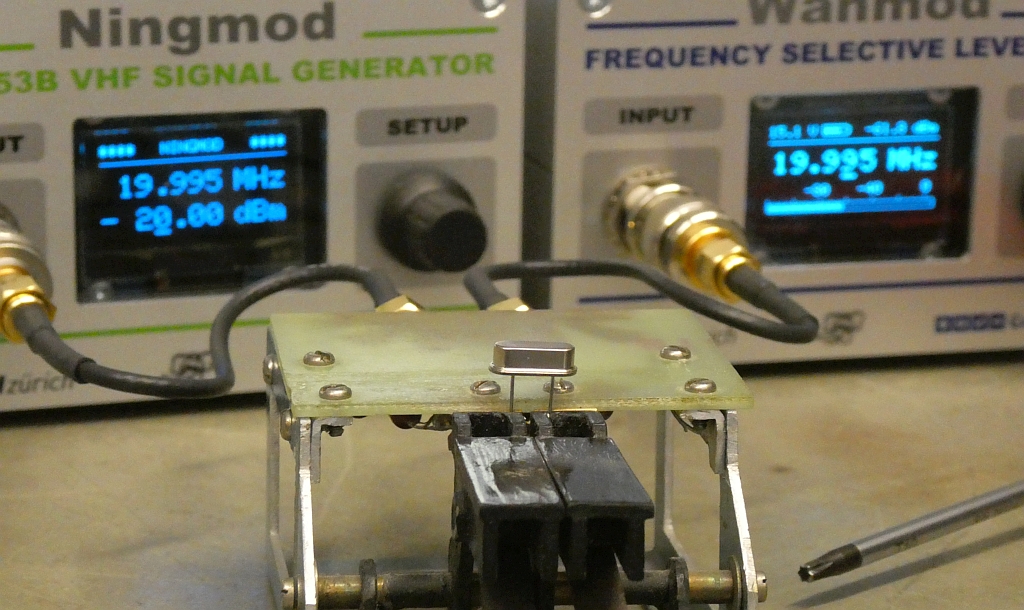
Above : Crystal Test Fixture.
Below : Frequency Response of Quartz Crystals. Clearly visisble is Fs an Fp.
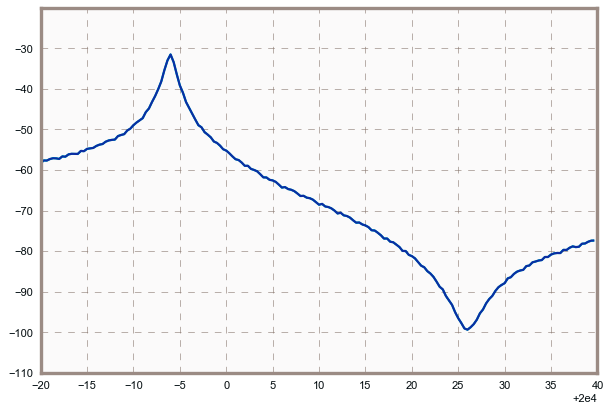
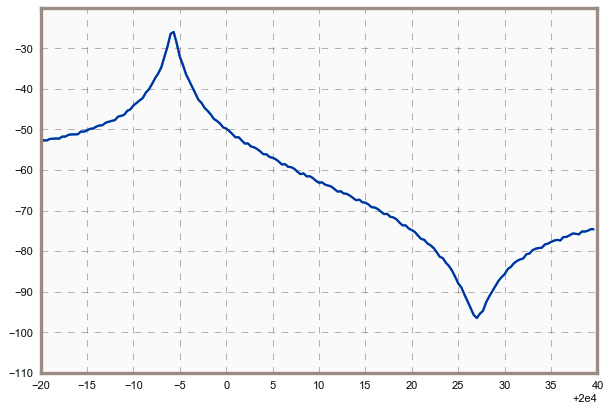
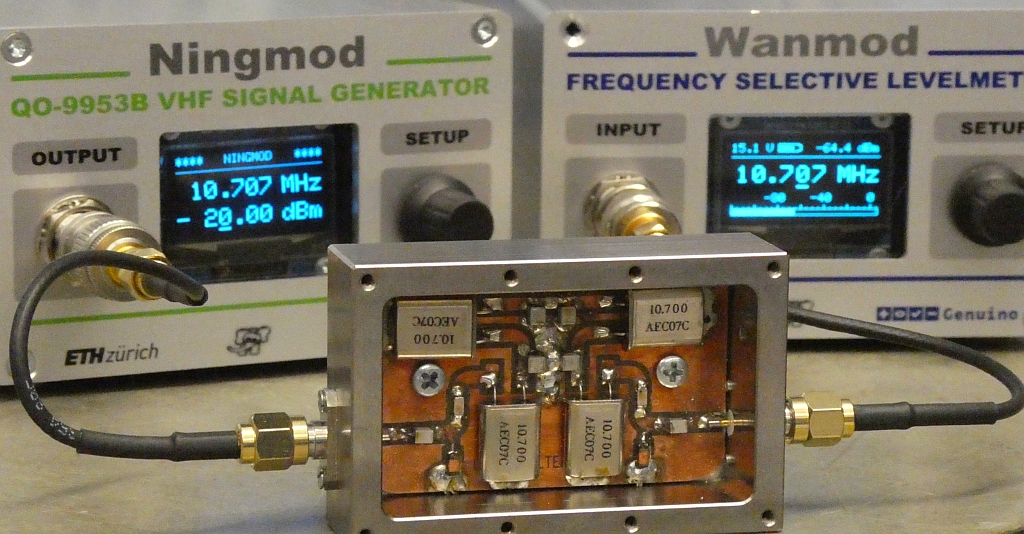
Above : DIY Crystal Bandpass
Below : Frequency Response of that 10.7 MHz Thing (left)
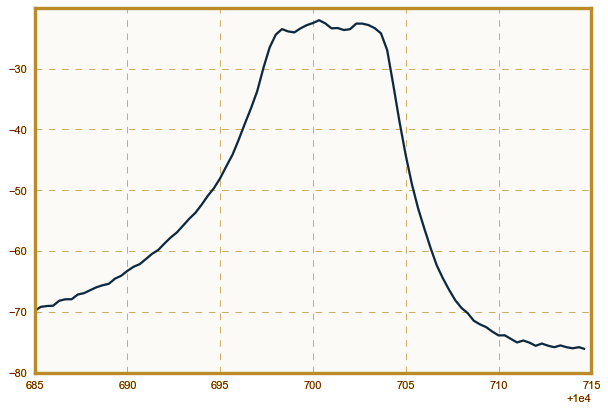
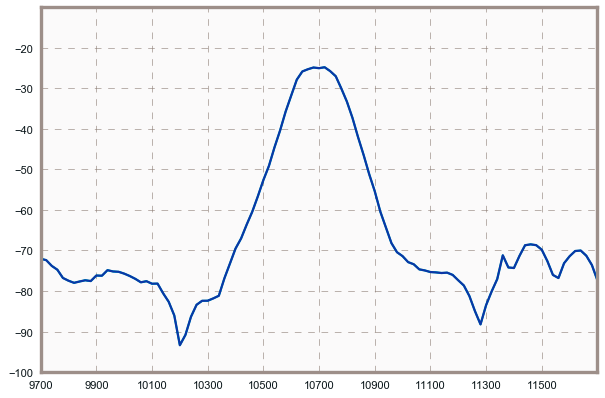
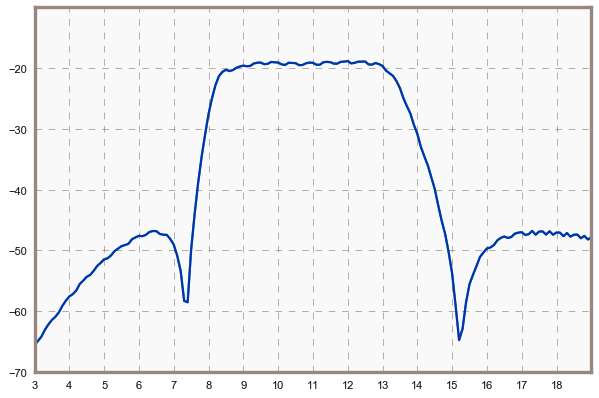
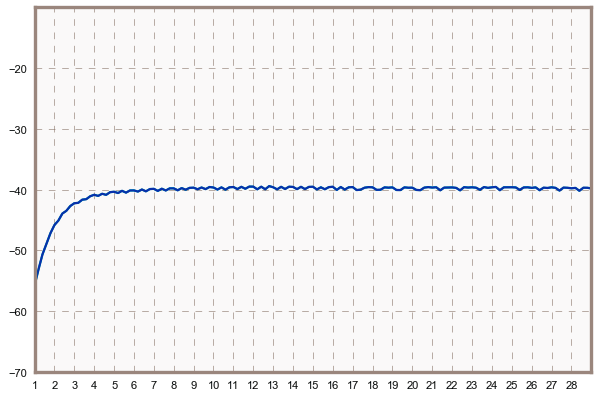
If not mentionned, Power was always - 20 dBm
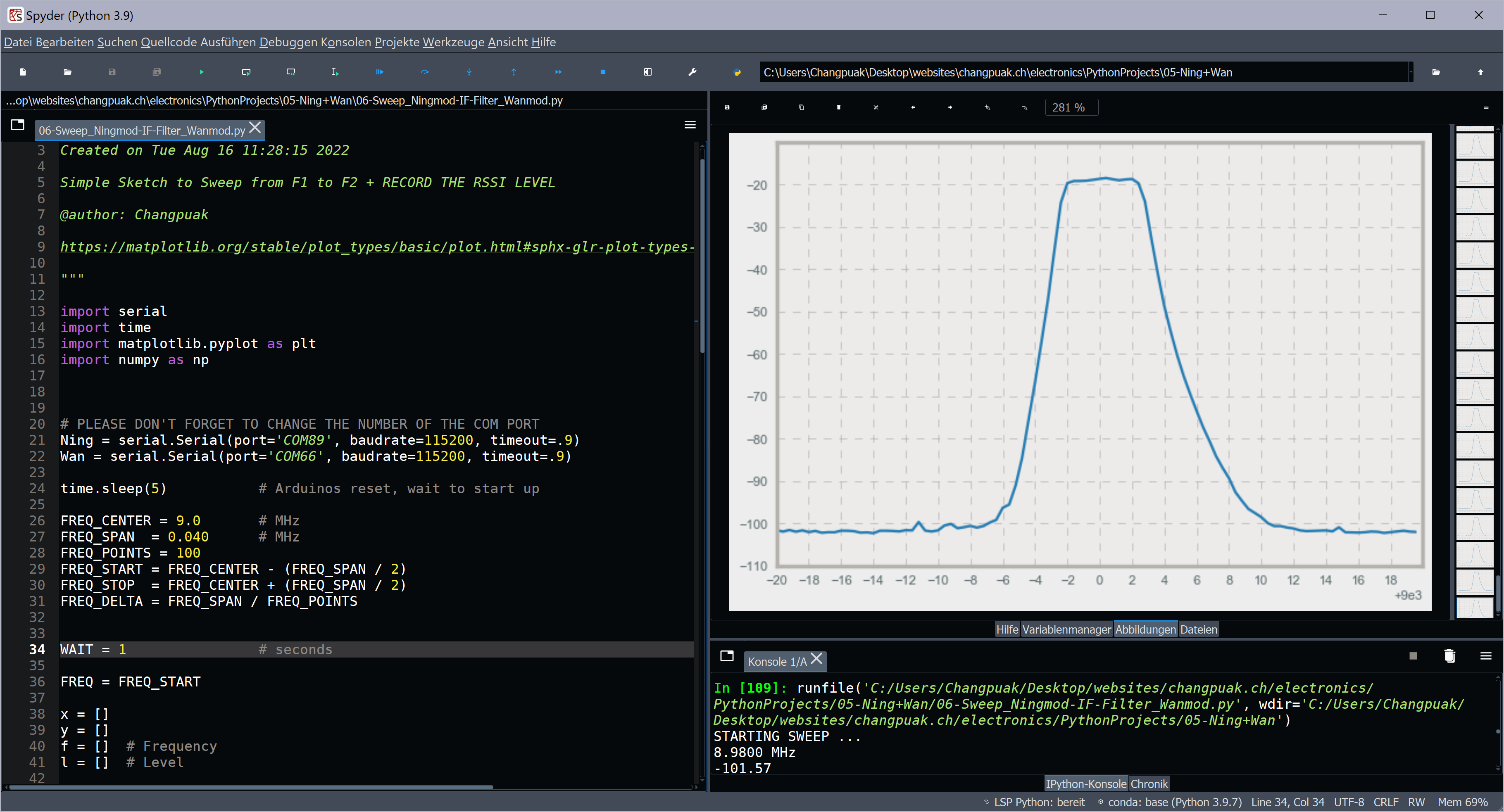
The Spyder Environment, while Sweeping ...
✈ Share your thoughts
The webmaster does not read these comments regularely. Urgent questions should be send via email.
Ads or links to completely uncorrelated things will be removed.
Your Browser says that you allow tracking. Mayst we suggest that you check that DNT thing ?
 ช้างเผือก
ช้างเผือก
